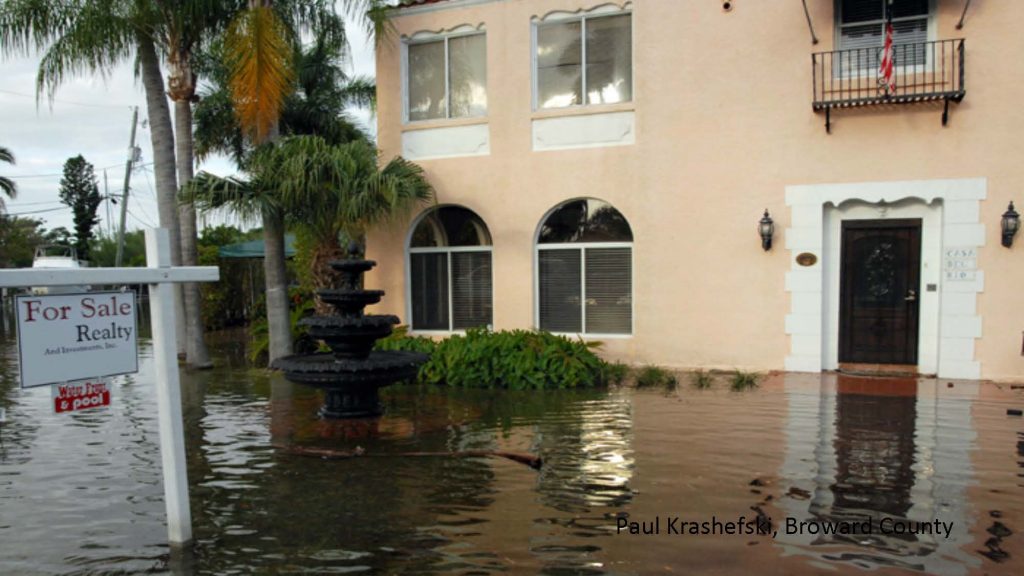“How long is my home safe with rising sea level?”

Flooded streets, homes and businesses are becoming more and more common in coastal communities all over the world. In my travels to explain rising sea
#1 – Recognize that flooding can combine 5 kinds of flood factors: storms, heavy rain, downhill runoff, extreme tides
#2 – Look at your vulnerability in terms of lowest opening in the structure (doors, windows, vents). Equally important, consider the flood vulnerability in terms of your neighborhood and
#3 – Understand sea level rise. It cannot be stopped this century, though it can be slowed if the world very aggressively works to slow the warming. Since we do not know how effective the world is going to be in terms of slowing the warming, we cannot precisely predict the height of future sea level, which largely comes from the melting ice sheets and glaciers. From what we know at present,
By mid-century the acceleration of sea level rise could “kick into high gear” at an exponential rate as I explained in a recent blog post . The second half of this century could bring six feet or more of sea level rise (SLR) which would be catastrophic. Even just a couple of inches of higher sea level, added to
#4 – Market forces and psychology could discount values surprisingly soon. The above three points describe how your property will be affected physically by rising sea level combined with other flooding. The value of your property is determined by another factor: Market perception of value and risk. Even if your house has never flooded, but the flood waters from extreme high tides and storms are getting closer to your property, the value will likely be affected. Just as in the stock market, there is a saying that markets discount for future risk. In some areas with frequent flooding, property values already are being reduced.
I tell people there are 3 ways your house can go underwater: a) Permanently when it is fully submerged by sea level rise. b) When it floods more frequently due to the combination of flood factors. Buyers might tolerate a rare flood event, but frequent flooding from any source, dilutes property values dramatically––who wants to buy a property that floods even a few days a year. c) The value can go “underwater” even before the water reaches the property line, if it becomes clear that the water is moving ever-closer.
I tell people that a decision about when to sell and when to move depends on your age, risk tolerance, your concern about the value of your estate, etc. Changes to federal and insurance industry policy could also substantially change the cost of flood insurance. It has been estimated that a $500 change in annual insurance premiums can change the property value by ten thousand dollars.
The fact is that there is no way to precisely say how many years you have with any particular piece of property. The above points may give you a better idea of the variables and the nuance. This new era of warmer temperature, producing extreme rainfall events, stronger storms and accelerating sea level rise is changing our world in real-time. When the accelerating rate of sea level rise becomes more obvious, vulnerable coastal property values could decline a lot faster than anyone imagines.
We are in uncharted territory…terra incognita as they used to say, to describe uncharted lands and treacherous sailing. As weather patterns change and sea level rises higher and faster than at any time in recorded human civilization, we too must navigate in uncharted territory.
